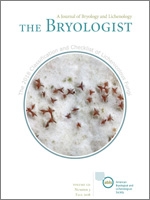Biological Soil Crusts (BSCs) are important components of sagebrush steppe ecosystems that may be affected by wildfire frequency and severity. As wildfires become more frequent and severe with exotic annual grasses and climate change, it is unknown how BSCs will be affected. We examined the sites of four 12–16 year-old wildfires in Idaho, U.S.A. and adjacent unburned habitats. We found that several lichen and bryophyte species were more frequent and abundant in unburned plots but no species were significantly associated with burned plots. Burned BSC communities were largely a subset of unburned communities. We compared sampling methods using eight 1 m × 1 m subplots per plot to eight 0.25 m × 0.25 m microplots per plot. We observed 80 total taxa in the subplots, as compared with 68 in the microplots. However, even using the smaller sampling area, the difference in community composition between burned and unburned plots was evident. The number of observed taxa was unusually high for BSC studies in the area and may reflect our sampling in varied plant communities in four wildfire sites, unusually well-developed BSCs, larger plot sizes, or greater attention to taxonomic detail. These results add to our understanding of longer-term BSC community recovery following wildfires in the western United States.
How to translate text using browser tools
31 July 2018
Biotic soil crust community composition 12–16 years after wildfires in Idaho, U.S.A.
Heather T. Root,
John C. Brinda,
E. Kyle Dodson
ACCESS THE FULL ARTICLE

The Bryologist
Vol. 121 • No. 3
Fall 2018
Vol. 121 • No. 3
Fall 2018
Biological soil crusts
disturbance
diversity
nestedness
recovery
sagebrush steppe




